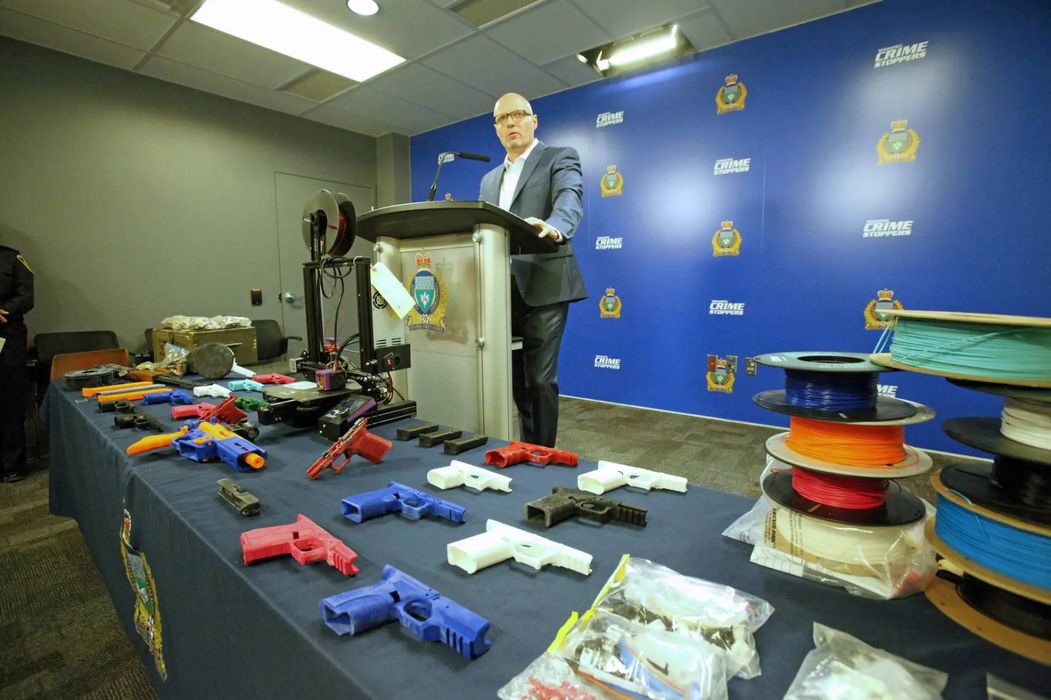
A convicted criminal was busted for 3D printing weapons — while in jail.
3D printed weapons have become a significant issue for police forces in many areas, as the state of 3D print technology now enables low volume production of semi-usable weapons that have no serial numbers. As such, these weapons are untraceable and attractive to criminal organizations. Untraceable weapons can be made from a combination of metal and 3D printed polymer parts.
We don’t normally report on this issue because it seems to have become a routine matter in many jurisdictions. However, this particular case is a bit different.
A Canadian man has been handed a 10-year sentence for continuing to manufacture and traffic firearms assembled with 3D printers — this time from behind bars. Blake Ellison-Crate, 26, was already serving a 12-year sentence for similar offenses when he masterminded a new conspiracy to produce and sell untraceable “ghost guns” from his prison cell.
Ellison-Crate’s prior case involved the production of 3D printed firearms that had in specific cases been used to commit crimes, including a shooting at a public event.
Ellison-Crate, who pleaded guilty to manufacturing and trafficking in firearms, apparently showed no signs of remorse for his actions.
Crown attorney Vanessa Gama said:
“He is currently serving the longest sentence imposed in Canada for these types of offenses, yet that did not deter him from continuing to commit these offenses while in federal custody.”
The case highlights the growing potential for inmates to exploit technological advancements even within the confines of prison. Ellison-Crate managed to continue his illegal activities using a contraband cellphone to order firearm parts online, which were then shipped to his girlfriend’s home. His accomplice, Michael Rivers, would retrieve the parts and assemble them into functioning firearms using a 3D printer, following detailed instructions from Ellison-Crate.
The investigation that led to Ellison-Crate’s latest conviction began when a Winnipeg welding company alerted police to a suspicious customer — later identified as Rivers — requesting the manufacture of metal parts typically used in 3D-printed handguns.
This tip launched a four-month investigation by the authorities, revealing Ellison-Crate’s elaborate scheme, which included recruiting family members to assist in financial transactions tied to the illegal operation.
This case doesn’t quite stop there. Inmate Ashlen Parris was sentenced to three years for conspiring to manufacture and traffic 3D printed firearms. Parris, 23, had discussed his plans over recorded jail phone calls with Rivers, but fortunately, quick police action prevented any guns from being produced or sold as a result of his conspiracy.
Parris, who was already serving time for assault, had positioned himself to become a prolific firearms dealer upon his release, bragging about his connections and potential buyers. His arrest, along with the seizure of 3D printed firearm parts and a 3D printer from Rivers’ residence, averted what could have been a dangerous influx of untraceable weapons on Canadian streets.
A telling quote from the report in the Winnipeg Free Press:
“In another call, Parris and Rivers discussed Ellison-Crate being been attacked by another inmate in the shower, suspected retribution for not satisfying a gun order fast enough.”
Evidently the knowledge of how to make these products is sufficient to bring unwanted attention while in custody.
These cases underscore the challenges law enforcement faces in combating the misuse of technology within the criminal world: It seems that even if the perps are jailed, they can, in some cases, continue their production.
Via Winnipeg Free Press and Winnipeg Free Press
